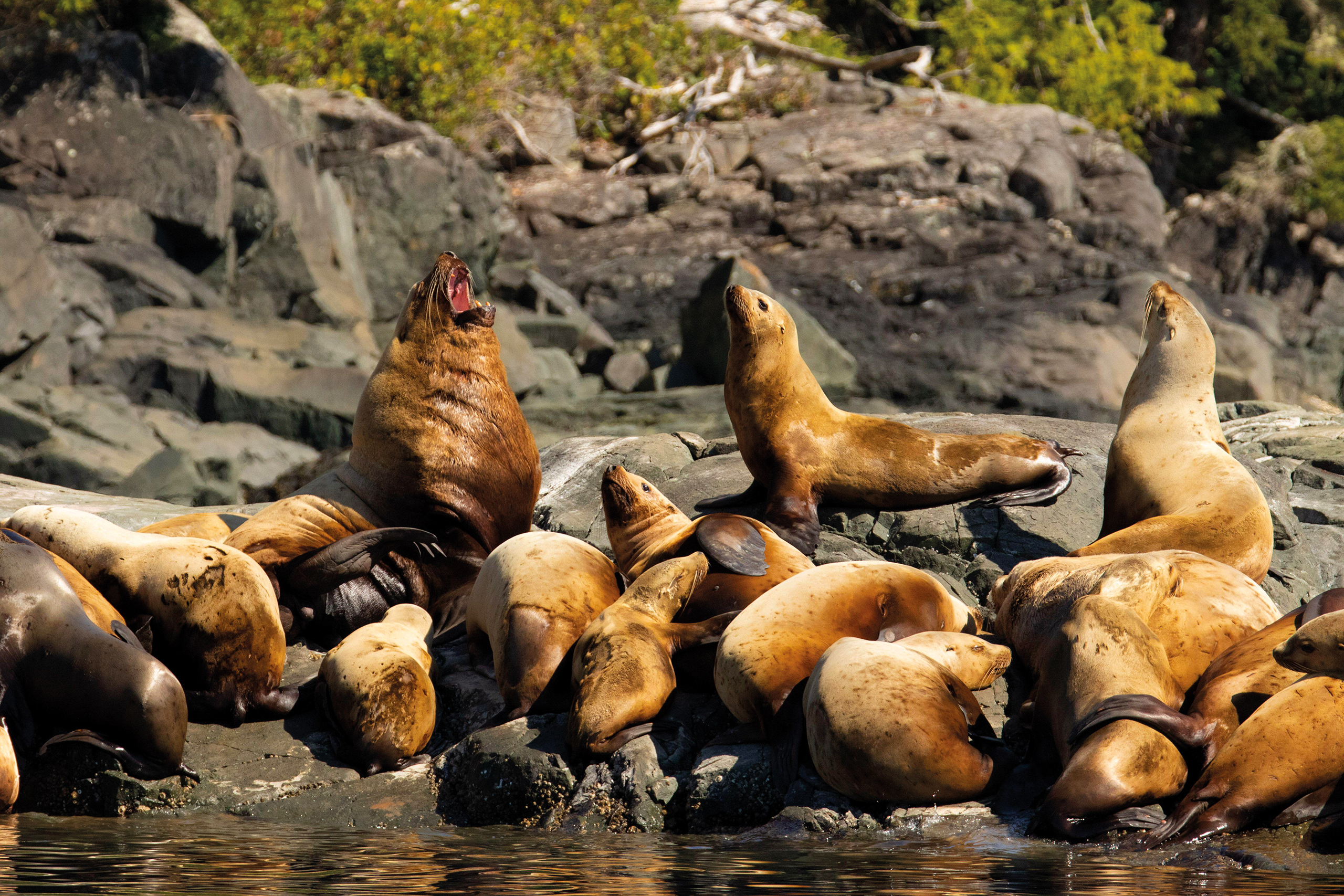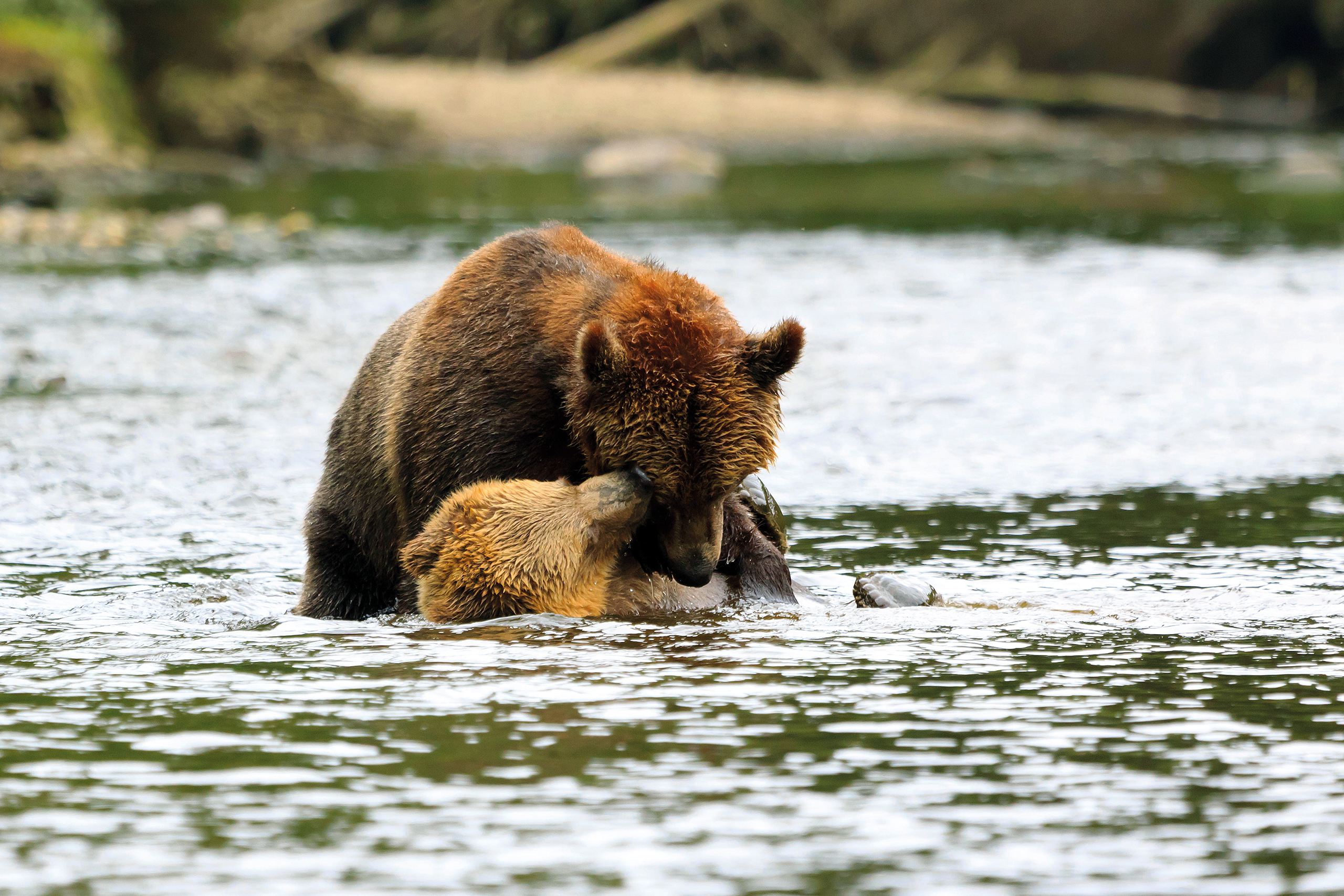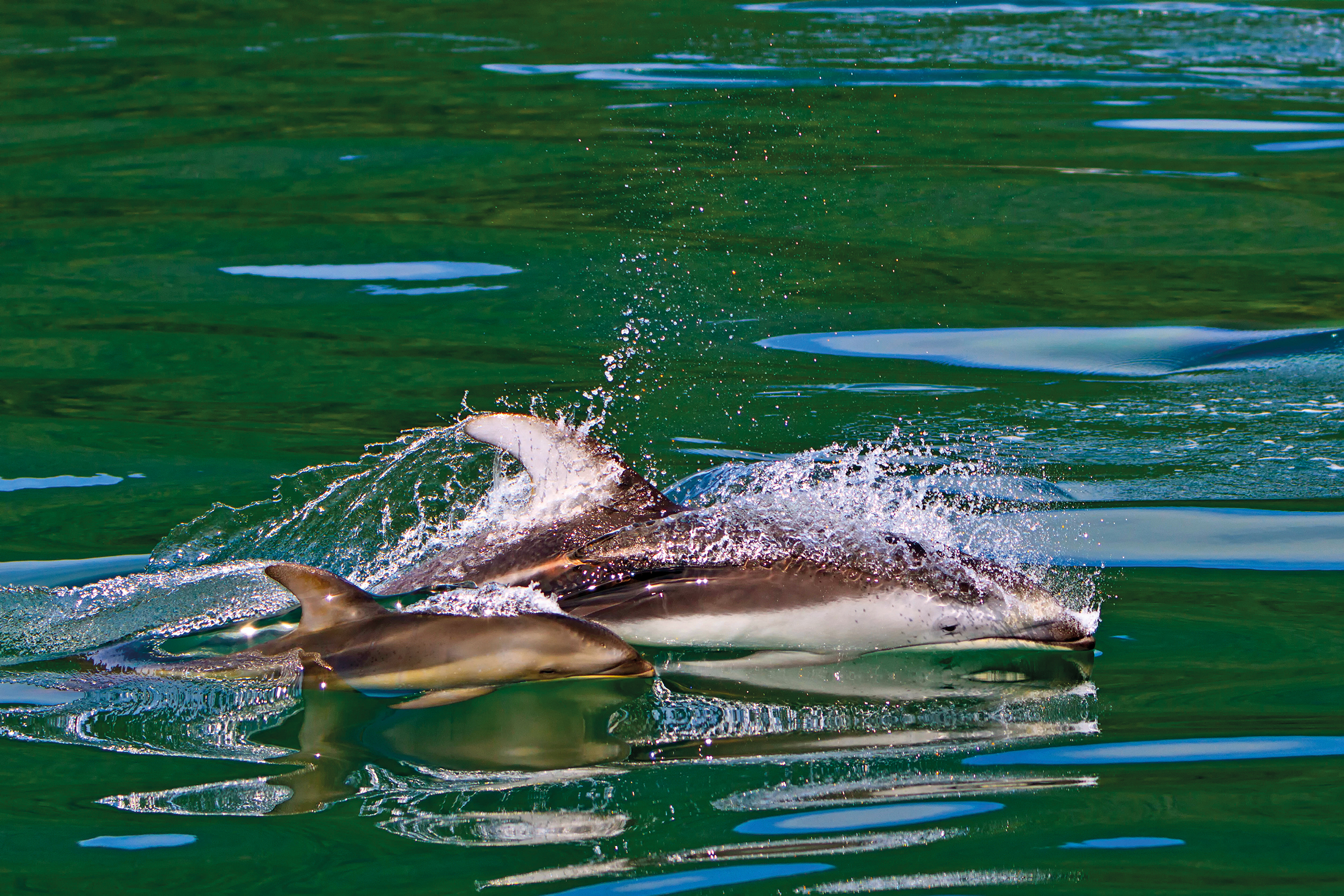Safeguarding the wildlife-filled waters of Canada’s Great Bear Sea
The area is now home to a network of newly designated marine protected areas, and the work of the coastal First Nations has been central to this change
Words Claire Dodd
(Alamy)
The silence felt loud as I leant over the bow and greedily scanned the waters. Now that the boat’s engines were dead, all that was left was the gentle lapping of the sea.
My eyes were fixed firmly on the water when, suddenly, I heard a “hffffffttttttt” sound. With a breathy gulp that sounded like a wave breaking on the shore, the huge jaws of a humpback broke the surface, scooping up wriggling fish caught in a carefully made net of bubbles.
My guide Rob Bryce, owner and operator of Northern BC Jet Boat Tours, was beaming, even though he’d probably glimpsed this scene on a million occasions. “Lots of times, they just look like a log with barnacles on, then boom: they just go up in the air!” he said.
The air still carried the whiff of salt and slightly putrid fish as I, remaining bolt upright, body coursing with adrenaline, looked out across the landscape.
“This time of year, humpbacks are solitary. It’s just the younger ones that are still here,” explained Rob. It was a rich reward for a trip that had more than delivered on its promise.
That morning, I’d boarded Rob’s boat in Kitimat in Northern British Columbia, a two-hour flight from Vancouver. This town of just 9,000 people lies in traditional Haisla First Nation territory and offers an easy access point for some of the most isolated sections of the Great Bear Rainforest. It was the perfect starting point for a daytripper like me.
The narrow walls of the fjord had opened into wide vistas as we turned down a smaller arm of the Douglas Channel, an artery of ocean that fords 140km into British Columbia’s mainland, all the way to Kitimat. Visitors usually travel to this remote Canadian coastline to spot bears, staying deep in the forest in isolated wilderness lodges only accessible by boat or float plane.
This part of British Columbia is home to the largest population of grizzly (brown) bears in Canada. You can even spot them from the water. I saw giant, shaggy, solitary grizzlies sitting chewing sedge grass, bulking up as best they could before the salmon returned. As Rob positioned the boat, I was close enough to hear them chew and to see the steam rising from their damp fur beneath errant sunbeams.
Rob took me deep into the Douglas Channel. In its most striking spots, waterfall after waterfall appeared in ladders tumbling down from looming glaciers, cutting the rock like knives. A mother seal and nursing baby jumped into the water as our wake covered their rock. To warm up from the rain, we soaked our muscles in an isolated hot spring decorated with mementos – flags of sports teams mainly – from others who had made it this far out.
I wasn’t here just to see wildlife, though. These waters form one section of a vast, newly designated network of Marine Protected Areas (MPAs) within the Great Bear Sea (AKA the Northern Shelf Bioregion). It has been years in the making, and I’d just witnessed part of what makes it special. But as the days went by, I discovered that it holds the key to more than just marine conservation.
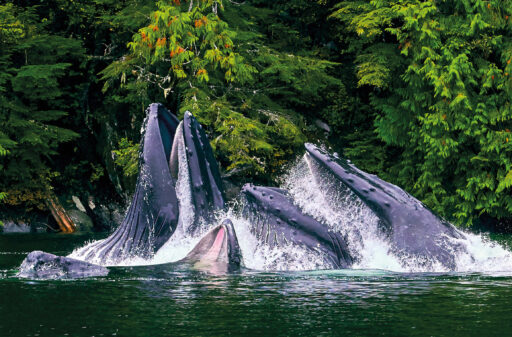
In 2022, research by the World Wildlife Federation showed that almost 90% of shipping routes in the Great Bear Sea — tankers, ferries, cruise ships and other commercial vessels — travelled through critical whale habitats, making the monitoring of their speeds and waste vitally important to the survival of endangered species such as humpbacks (pictured) (Alamy)
The Douglas Channel is one of the most diverse ecosystems within British Columbia, known in particular for its abundant marine wildlife, including humpbacks, orcas, seals and sea lions (Alamy)
The first of its kind
Study any map of British Columbia (BC) and you’ll see a vast scattering of intricate isles, inlets, fjords and meandering waterways that cut deep into the interior like veins in a piece of marble. More than 40,000 islands fringe the coast, sodden and searing. This region is a place of intense beauty and brutal weather. It’s also home to the largest remaining coastal temperate rainforest in the world.
The Great Bear Rainforest stretches more than 400km along the northern and central coast of the province, from the Alaskan border to Knight Inlet. Roughly the size of Ireland, it represents a quarter of all remaining coastal temperate rainforests left on the planet. Here, 1,000-year-old trees can tower over 50m high, and a fringe of coastal mountains topped by glaciers runs the mainland like a spine, catching the warm, wet air that smashes in from the ocean.
In 2016, 85% of the rainforest was declared off-limits to loggers, including 70% of its old-growth forests. Yet this Galápagos of the north would be nothing without the ocean and tidal estuaries. Now these waters are finally receiving similar protections to the rainforest, and central to this change has been the work of the coastal First Nations, who have preserved the land and sea here for millennia. Twenty-six distinct First Nations still call it home.
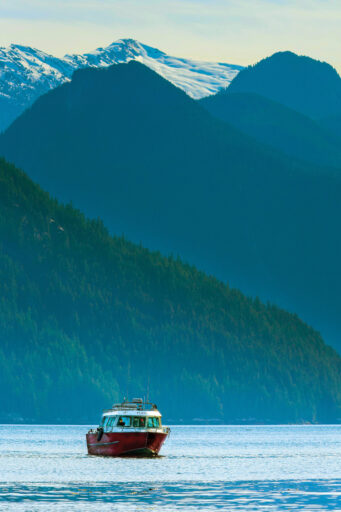
A network of protected areas has been created across 30% of the Great Bear Sea, a vast stretch of water that spans two-thirds of the coast of British Columbia, reaching down from the Canada-Alaska border to the northern tip of Vancouver Island. Home to kelp forests, rare corals, expansive sponge beds, eelgrass meadows, fin whales, humpbacks, orcas, salmon, herring, sea otters, dolphins and sea birds, the sea’s 10 million hectares include some of the most ecologically productive cold-water marine regions in the world.
Just as importantly, the Great Bear Sea MPA network differs from other conservation areas in that it puts First Nations stewardship at its core. It is the first scheme of its kind in Canada, and it has recently been boosted by a partnership that includes 17 coastal First Nations, the Government of Canada and the Province of British Columbia, which secured CA$335 million (£187 million) of long-term funding for large-scale, Indigenous-led conservation.
It is the culmination of two decades of work by Indigenous communities, who have battled to see the region protected from further harm. They will lead and make decisions on how to sustainably manage the needs of the communities here and how best to protect these culturally important and vital ecosystems. But, as I would discover, this isn’t just about environmental protection; it’s also about reconciliation and Indigenous autonomy.
Kermode bears are white because of a recessive gene that both parents must carry for a cub to have white fur, making the likelihood of one being born very low (Alamy)
A bit of background
To understand what makes this new initiative so special, I needed to learn more about the history of the region. So I spoke to the people who know these lands and waters best.
“We still have untouched wilderness here,” said Dallas Smith, president of the Nanwakolas Council, who told me of the long-running partnership between environmental activists, the Canadian Government and the First Nations that has protected this remote coastline through a series of hard-fought agreements dating back more than 25 years.
“What makes the Great Bear Sea special is that we [the coastal First Nations] have been a part of it for 14,000 years, predating the last ice age,” he told me. “Colonisation took a lot of the trust that we had in our identities and our surroundings away from us. But over the years of spatial-land-use and marine-use planning, we’ve gained this momentum back, to where we’re not just fighting to be seen; we’re fighting for everybody to see what used to be.”
The Great Bear Rainforest was named by the activists, Dallas said, inspired by the wildlife that dwells there. Beyond its population of grizzlies, this is the home of the near-mythical Kermode bear (or spirit bear). With their naturally white fur, about 10% of black bears born in this area – and only here – carry the recessive gene that gives them their colouring.
The rainforest’s name initially caused some consternation, though. “I hated it,” Dallas told me. “I was like: this isn’t the Great Bear Rainforest; this is the territory of the Haida Nation, the Tlowitsis Nation, the Heiltsuk territory. But from a marketing point of view, it made it globally significant. And so we’ve grown to like it over time.”
“Indigenous people are actually part of what makes an ecosystem healthy”
It’s believed that the Great Bear Rainforest protections have so far helped to create nearly 1,300 jobs, launched over 130 new businesses and raised household incomes across the region. It’s hoped that the Great Bear Sea MPA network can do the same, if not more.
“We’re ocean people,” said Dallas. “Our intent was always to protect the land and the sea. Protecting the trees didn’t matter if we didn’t protect the ocean and the ecosystems at the shore. That’s where all the life really is.”
Overfishing, habit loss, an increase in shipping traffic and climate change have all impacted this rare treasure. The money secured as part of the Great Bear Sea Project Finance for Permanence (PFP) agreement will help to conserve 84 at-risk species using both traditional knowledge and science.
“It’s important that outsiders are starting to realise… that Indigenous people are part of what makes an ecosystem healthy,” said Dallas. “Our stories, our beliefs, the wisdom of our Elders has always backed that up. But others are starting to understand that now.”
Beginning in mid-July, marine tours from Knight Inlet Lodge visit the boundaries of Robson Bight Marine Orca Whale Sanctuary, an area frequented by 16 different pods of orca (Alamy)
Access all areas
It’s an exciting next step, but the coastal region’s Indigenous communities still face two major hurdles: finding ways to attract visitors to this remote area and ensuring they receive the benefits from the tourism that their stewardship enables. One positive example of this lies at the northernmost tip of the Great Bear Sea on Haida Gwaii, the ancestral territory of the Haida Nation.
This archipelago of 150 rocky, rugged, densely forested islands is located just beneath the Alaskan panhandle, two hours’ flight north from Vancouver. When I visited, I navigated narrow channels, islands and rocks as sharp as teeth, following the kelp forests – vital carbon sinks – across a swollen Pacific, and glimpsed centuries-old, pre-contact totem poles.
Here, Haida Tourism, an Indigenous-owned company, forms part of the Haida Nation’s pioneering work to develop businesses that achieve financial independence, improve the life of the Haida people and protect nature. Stays at its lodges, including Haida House, also feature tours with cultural guides.
Much of the good work being done is about preserving and rebuilding ways of life. To see this first-hand, I headed back to Vancouver and boarded a 45-minute flight to Campbell River on Vancouver Island. I was on my way to the 100% Indigenous-owned Knight Inlet Lodge, which was bought by a partnership of the Da’naxda’xw Awaetlala, Mamalilikulla, Tlowitsis, Wei Wai Kum and K’ómoks Nations back in 2017.
Knight Inlet is the longest fjord on the British Columbia coast. The lodge itself is housed on a pontoon in Glendale Cove, halfway down its 125km span, and it takes a 25-minute float-plane ride over from Campbell River just to reach it.
Glued to my window, I watched as we flew over islands and valleys where the effects of logging are starkly visible, and was mesmerised as I realised the lines of broken water I could see in the ocean were a pod of dolphins, moving at pace. Landing on a sea turned turquoise by the glacier run-off, I said goodbye to my phone signal.
The lodge houses travellers on two- and three-night wildlife-viewing experiences. Less than an hour after arriving, I spotted my first grizzlies from a tiny four-seater boat out in the cove. It was a mother and two cubs. I soon settled into a routine of donning and removing outdoor gear in the boot room, then jumping into boats to explore.
The lodge is committed to conservation and to protecting the wildlife on which it depends. Pioneering projects have included bear facial recognition (to better track populations and understand their habits), as well as a bear-viewing licence fee that helps fund the protection of wild bears and their ecosystems.
The business is also an important source of employment for the Da’naxda’xw Awaetlala Nation – a population of around 250 – whose ancestral territory is Knight Inlet. In turn, it’s a way of sharing and preserving culture, and being able to be physically present in these remote lands.
It was here that I met Stanley Beans and Steven Glendale, guides and Nation members, who shared stories of their culture with guests at nightly talks and led trips out into the inlet to explain their history.
“See that?” asked Stanley on one of our trips, pointing to the red paint left by his ancestors on a rock. Later, as we moored the boat back at the lodge, Steven pointed to the trees: “There used to be a village here.”
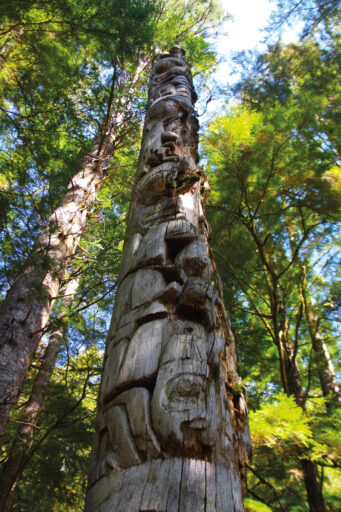
The next day, Stanley and Steven sailed me the length of the inlet and out into the ocean. This tour is only for those who book three nights or more, as it takes a lot of fuel to get to the open sea. Escorted first by dolphins, then by a pod of four orcas, we had lunch on the ocean while watching humpbacks surface. We glimpsed rafts of sea otters afloat in the kelp fronds as the sun lit the far-away mountains. It looked too perfect to be real. It was then that a sea lion popped up, slapping a fish on the water’s surface.
“Let’s stop at my village,” said Stanley. We paused at Tsatsisnukwomi (meaning ‘Place of the Eelgrass’), located on an island where the inlet meets the ocean. Today there are ten inhabitants. On the dock, I met Liz Davidson, a resident and Da’naxda’xw Awaetlala Nation member. She was waiting beneath painted totems that had been raised in honour of a passed community member.
“When we first moved back here from Calgary, I was scared all the time,” Liz told me. Having returned to her childhood village after more than 40 years away, it had taken a while for her to get used to the forest again.
Abandoned in the late 1960s, the resettling of Tsatsisnukwomi began in the ’80s. “You have to be self-sufficient out here,” she said. “You have to support your family. You have to figure out how.” The lodge helps by providing employment and visitors.
She led me through the village. The big house gave an idea of what a traditional village would once have looked like. Built in the 2000s by Liz’s father, a hereditary chief, it returned a ceremonial centre to the Nation. She led me inside. There was an earthen floor and built-in stepped benches that surrounded the whole room, with just a glimmer of natural light from the opening above the fire pit.
“This is our sacred space,” Liz told me, explaining some of the stories behind the carved cedar masks of ravens, thunderbirds and bears, and telling me about the dances passed down the generations. Colossal ancient cedars held up the roof. These trees are no longer found on this territory; they had to be sourced from neighbours. “We call the cedar the tree of life because, traditionally, it provided us with absolutely everything we needed, aside from food,” Liz explained.
Maybe the Great Bear Sea initiative – especially its funding – will eventually allow other Nations to be present on their ancestral lands. That’s the hope. Many now live in villages on Vancouver Island or across Canada’s urban hubs. But employment stewarding the ocean, in land and ocean management, and in tourism is a growing opportunity for those who want to return.
On heading back to the dock, Liz pointed out an ancient canoe run of cleared stones on the beach. “Our inlet is one of few on the coast that still gets an abundance of eulachon fish,” she told me, describing how her family still spend one month each year (“Because we fish the traditional way”) at the head of the inlet making a ceremonially important oil from them. The presence of this fish is proof that Indigenous knowledge has long been key to protecting this ecosystem, and how important it is that it takes centre stage once more.
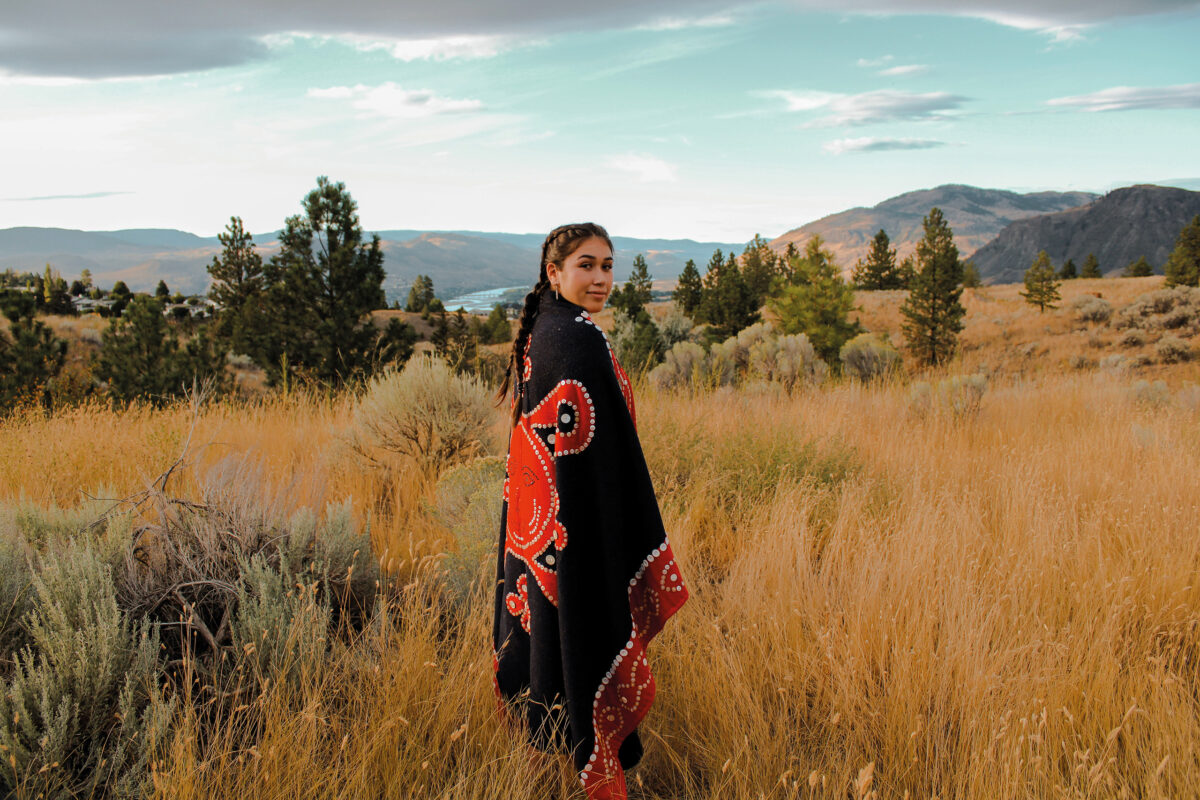
Alexandra Thomas
Alexandra Thomas is from the Tlowitsis First Nation and is the forest stewardship coordinator for Nanwakolas Council. She works with member Nations to provide support in forestry planning and to decolonise and indigenise the approach to resource management, while educating external partners on Kwakwaka’wakw values, history and culture. Before going to university, she worked as one of the Tlowitsis guardian watchmen – custodians hired by their Nations to watch over and protect the ancestral lands and sea.
“I’ve lived on the coast my whole life. My Nation has been displaced from our traditional lands since 1969, and we’ve spread out across British Columbia. We are currently in the process of establishing a new village for our citizens on Vancouver Island, near Campbell River, known as Nenagwas, or ‘A Place to Come Home to’ in English. It’s really exciting to think that people are going to be coming back.
“People don’t realise that much of BC’s coast is islands and remote inlets. It’s a difficult part of the world to get to. You’re looking at boating for a couple of hours, or you can helicopter in or get a seaplane.
“Before I went to university, I worked as a guardian watchman for my Nation with my mom, Gina Thomas. The key part of being a guardian is stewardship – being actively present on the land and observing. One of the most important things in First Nations culture is observing things. Many First Nations people don’t get the opportunity to be on their traditional territory, so having a role where you’re out there all the time, monitoring these ecosystems, is just incredible. It felt like this was where I was meant to be.
“We have such incredible history here, and it’s something I talk about a lot in my work. But it’s not widely known in Canadian culture. My culture is about looking at the world through relationships. Nothing exists in isolation. Our relationship with the salmon is just as important as our relationship with our family because they are our family. A lot of our science and technology came from wildlife and from nature itself because we were observing what the ecosystems were doing and imitated that balance and harmony.
“I think that First Nations people have a lot of answers to current challenges, but they’re not written down in a textbook: it’s through storytelling; it’s through experiences; it’s through relationships. That’s the way forward.”
•••
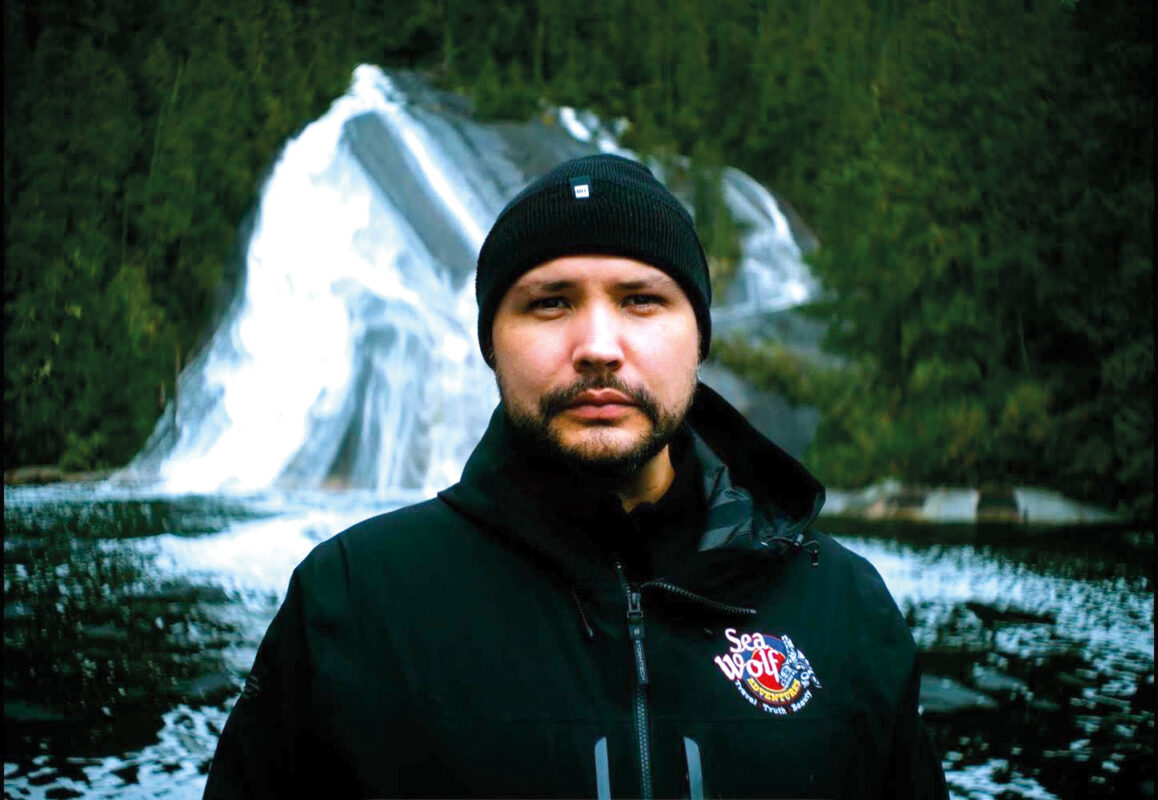
Mike Willie
Mike Willie is a hereditary chief of the Musgamakw Dzawada‘enuxw First Nation, members of the Kwakwaka’wakw group of Nations. He is also the owner of Sea Wolf Adventures and co-owner of Coastal Rainforest Safaris. Both companies offer wildlife viewing and cultural tours on the ocean, operating from the north of Vancouver Island to the Broughton Archipelago, Johnstone Strait and the Great Bear Rainforest.
“I grew up in a tiny place called Kingcome Inlet, in Ukwana’lis (or Kingcome Village). There were only about 80 people. No roads. No cars could get there. It was really remote.
“From 1884 to 1951, it was against the law for Indigenous people to practise our culture, and some of our chiefs would go to jail. Kingcome’s remoteness played a role in preserving a lot of our history, which has shaped who I am today and shaped my companies. I want to employ our people to get them off the reserves – reserves the government made for us, to keep us there while resource extraction happens around us. I want to make a difference through conservation work, to protect our ecosystems and wildlife.
“Over the past few years, we’ve really worked hard on getting the salmon-farming industry out of our territory. It’s paid off. Now there are thousands of wild salmon coming back. My team had tears in their eyes when they started to see the river turning black because there were so many. Before that, sometimes we’d only have 50 to 80 salmon coming back.
“Not only is that good for us as First Nations but it’s good for the ancestors, the grizzly bears, the orcas too. We’ve seen so many orcas this year. And the bears are coming back. Before, I’d seen bears running up the river in search of fish, knowing they weren’t going to find any. We’ve had to watch them getting skinny; that’s what drove me and my team to fight hard to get the farms out.
“Our experiences are all boat-based wildlife safaris. Sea Wolf Adventures goes into the fjords of the mainland and focuses on grizzly bears mainly. Coastal Rainforest Safaris is the same thing, but we’re on the northern tip of Vancouver Island. We have sea otters up there and a lot of humpbacks. But we’ve also been seeing sea wolves – a subspecies of grey wolf that is endemic to the Pacific coast of Canada – on the adjacent tiny islands. They like to swim.
“It’s hard to explain the feeling of going into places where our ancestors would have paddled through the waterways. Tourists help us to be out on the water and to see who is out in the territory so we can protect it. We’re the presence out there now. And it’s working.
“We’re just starting the Indigenous tourism economy here. It’s an ethical choice. It’s not just about sharing our story; it’s about connecting our people to their ancestral territories, supporting our conservation work and funding work like language revitalisation. We’ve been stewards for thousands and thousands of years. We’ve learnt how to co-exist with the land and only take as much as we need. That’s the Indigenous way; we invented sustainability.”
•••
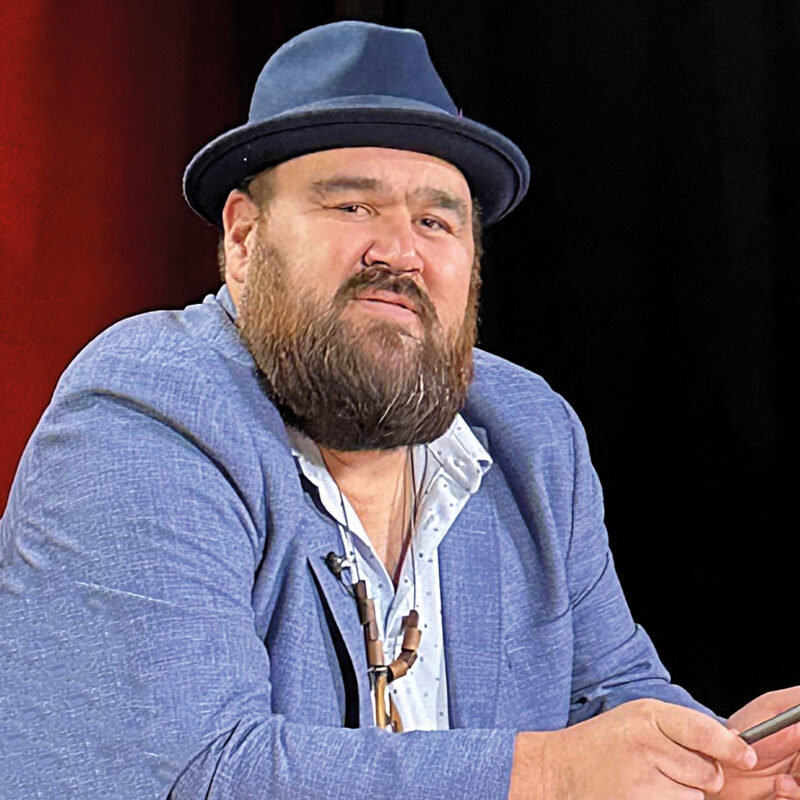
Dallas Smith
Dallas Smith is the founder and president of Nanwakolas Council, which represents six member Nations: Mamalilikulla First Nation, Tlowitsis Nation, Da’naxda’xw Awaetlala Nation, Wei Wai Kum Nation, We Wai Kai Nation and K’ómoks Nation. These nations are located on northern Vancouver Island and the neighbouring southern Central Coast region. Dallas was a key negotiator in the Great Bear Rainforest agreement, which protected the area from industrial logging. He has also played a central role in the new Great Bear Sea agreements.
“The Great Bear Sea is very significant to us. The designation of the Great Bear Rainforest was based on other people’s visions and goals. We sat there for years at a planning table, watching forest companies, environmentalists, tour companies and mining companies talk about how they wanted to manage our territories – the territories that sustained us. It was very challenging. We sort of got on and rode it out until we found a chance to take the steering wheel. We have brought it back to the sea because that’s the giver of life to our people.
“It’s taken 25 years for us to achieve some of these goals, but it helped us figure out what it was going to cost to do it. We need to better manage our ocean resources. It’s been challenging because we’ve had to restructure how some people do business in our territories – our own people included. But the sense of the greater good is finally starting to be seen by everybody.
“We established the Great Bear Sea because we were trying to protect our identities and who we are as people. Instead of us fighting to belong, people are now looking to us for answers. There’s been a generational shift.
“We got to such a point of colonisation where we only had jurisdiction over our reserves, and only a few people had knowledge of the rest of our traditional territories. Now, our youth are going to summer camps out there, they’re working as summer students in the stewardship offices and they’re starting to understand that there’s so much more than just the socially challenged areas that we live in right now. There are these grand fjords, these great inlets and these wonderful places that are part of their history and part of who they are. We lost a lot of our culture. We lost a lot of our ability to understand the interactions of nature. That’s being reborn again.
“Bringing people home is a huge part of what we’re doing. The funding for the Great Bear Sea has been able to put us in a position where we can start thinking a lot more holistically. We’ve built opportunities for our people to come back after university or college and apply their education within their communities. That’s starting to make our communities stronger again.”
•••
The village of Tsatsisnukwomi (Claire Dodd)
Need to know
The Haida Pledge
Visitors to Haida Gwaii are asked to adhere to the Haida Pledge.
It includes requests for visitors to ask permission before taking pictures of people and places, and to respect all beings. haidagwaiipledge.ca
When to go
Winter here can be harsh. Knight Inlet Lodge opens from mid-May to mid-October; Haida House at Tllaal (haidatourism.ca) is open from March to the end of December. Northern BC Jet Boat Tours (northernbcjetboattours.ca) run whale-watching tours from late July to October and bear-viewing from late May to early July, when the bears emerge from hibernation, and from mid-August until late October (salmon season).
Getting there & around
Vancouver is served by daily direct flights from UK airports including London Heathrow and Gatwick, Glasgow and Manchester from £568 return, taking around 10 hours. From there, Air Canada (aircanada.com) and Pacific Coastal Airlines (pacificcoastal.com) fly to Haida Gwaii, arriving in Sandspit and Masset respectively; West Jet (westjet.com) and Air Canada fly to Northwest Regional Airport Terrace-Kitimat; and Pacific Coastal Airlines flies to Campbell River.
Where to stay
A three-night stay at Knight Inlet Lodge (grizzlytours.com) costs from £1,885pp, based on double occupancy.
Further reading & information
Visit the British Columbia tourism site (hellobc.com) for help planning your trip
The trip
The author travelled with the support of Destination BC (destinationbc.ca) and Knight Inlet Lodge (grizzlytours.com).
The totem outside the big house in Tsatsisnukwomi (Claire Dodd)
